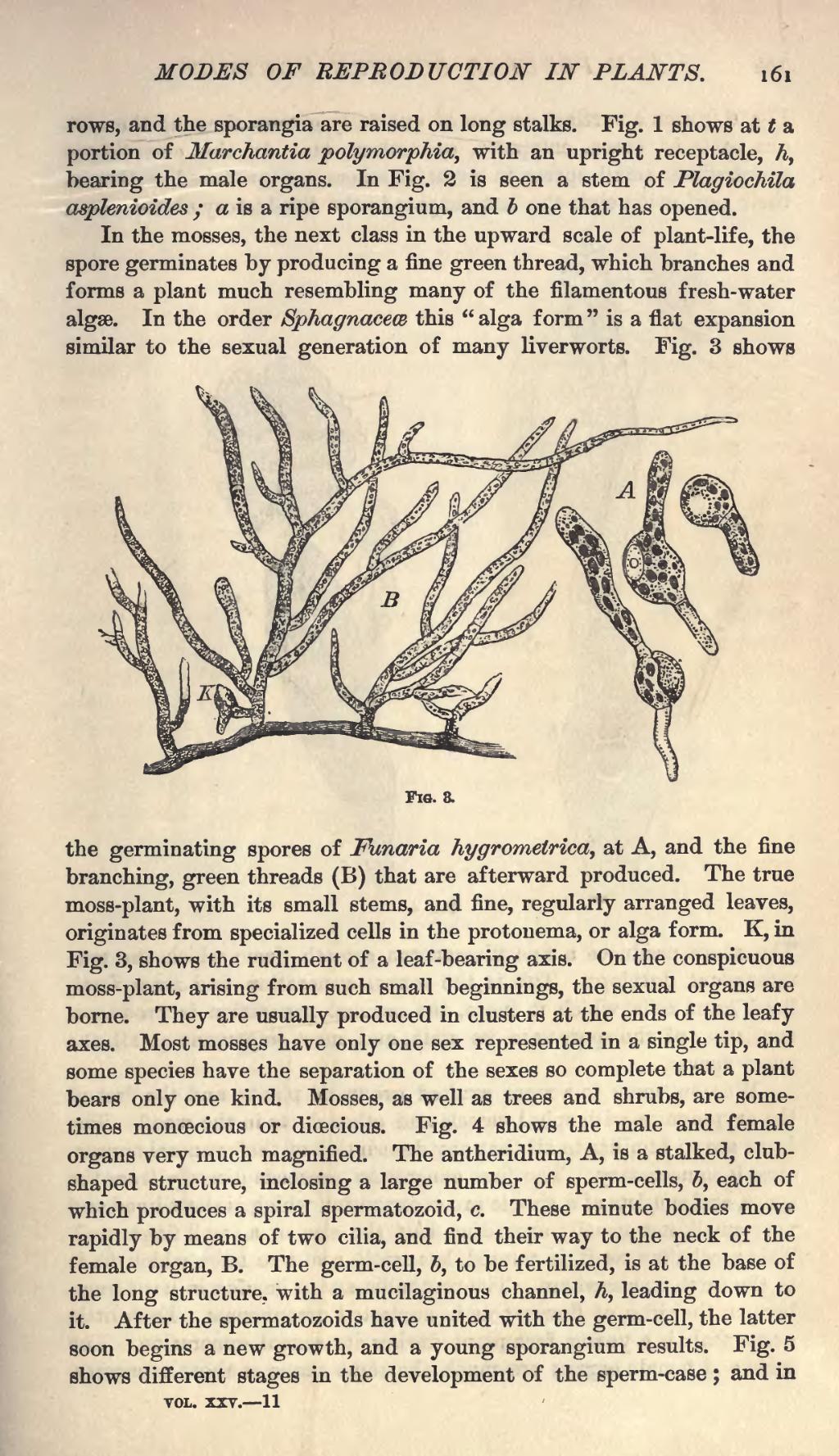rows, and the sporangia are raised on long stalks. Fig. 1 shows at t a portion of Marchantia polymorphia, with an upright receptacle, h, bearing the male organs. In Fig. 2 is seen a stem of Plagiochila asplenioides; a is a ripe sporangium, and b one that has opened.
In the mosses, the next class in the upward scale of plant-life, the spore germinates by producing a fine green thread, which branches and forms a plant much resembling many of the filamentous fresh-water algæ. In the order Sphagnaceæ this "alga form" is a flat expansion similar to the sexual generation of many liverworts. Fig. 3 shows

Fig. 3.
the germinating spores of Funaria hygrometrica, at A, and the fine branching, green threads (B) that are afterward produced. The true moss-plant, with its small stems, and fine, regularly arranged leaves, originates from specialized cells in the protonema, or alga form. K, in Fig. 3, shows the rudiment of a leaf-bearing axis. On the conspicuous moss-plant, arising from such small beginnings, the sexual organs are borne. They are usually produced in clusters at the ends of the leafy axes. Most mosses have only one sex represented in a single tip, and some species have the separation of the sexes so complete that a plant bears only one kind. Mosses, as well as trees and shrubs, are sometimes monœcious or diœcious. Fig. 4 shows the male and female organs very much magnified. The antheridium. A, is a stalked, club-shaped structure, inclosing a large number of sperm-cells, b, each of which produces a spiral spermatozoid, c. These minute bodies move rapidly by means of two cilia, and find their way to the neck of the female organ, B. The germ-cell, b, to be fertilized, is at the base of the long structure, with a mucilaginous channel. h, leading down to it. After the spermatozoids have united with the germ-cell, the latter soon begins a new growth, and a young sporangium results. Fig. 5 shows different stages in the development of the sperm-case; and in
